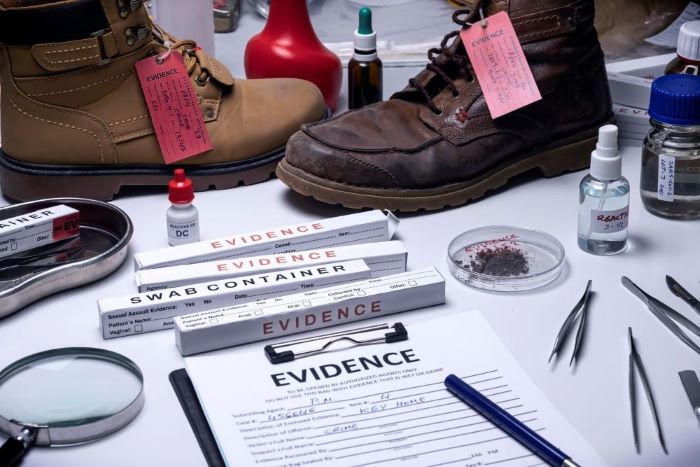Murder mysteries are intricate puzzles that thrill readers as they search for hidden meanings and uncover secrets woven into the story. Crafting effective murder mystery clue ideas is essential to keeping readers engaged and immersed.
A well-placed clue or a strategic red herring can build suspense, deepen the mystery, and ensure readers keep turning the pages.
Mystery Novel Clues – Tiny Tidbits That Tell a Story
Mystery novel clues are pieces of information that reveal small yet crucial parts of the puzzle. They should be subtle enough not to give away the entire plot, yet detailed enough to offer a sense of discovery.
These clues range from physical evidence, such as a lost button or carpet fibers, to subtle behavioral indicators that hint at a character’s guilt or innocence. Here are different types of mystery clues and tips to employ them skillfully.
What Makes a Good Clue in a Mystery?
Creating a good clue in a mystery requires balance, as it must be both compelling and misleading at the same time. Here’s what to consider when crafting each clue:
- Subtlety: A strong clue shouldn’t be obvious on the first pass but should make sense in hindsight. Readers should feel a sense of “aha†when they finally understand its meaning.
- Relevance: Each clue should serve the story. Even red herrings should add value by contributing to character development or enhancing the story’s atmosphere.
- Placement: Clues need to appear at the right moments in the story. Dropping hints during critical moments will help build suspense and maintain the flow of the narrative.
- Consistency: True clues should connect logically to the story’s central mystery and characters. The clue should hold up upon rereading, allowing astute readers to pick up on them.
Let’s explore ten murder mystery clue ideas you can employ to keep your readers guessing until the very end.
1. Mysterious Personal Belongings
Personal items left at the crime scene can be fantastic physical clues that hint at the identity of the culprit. A seemingly insignificant object such as a lost button from a suspect’s coat or a discarded wrapper of a specific brand of gum can lead the astute detective to a person connected to the crime.
Use personal belongings as layered clues to weave connections between characters, allowing readers to interpret their significance as the story progresses.
How to Use:
- Add a twist: The personal belonging could belong to someone who wasn’t present at the scene, throwing the detective off track.
- Reveal character background: A sentimental item like an engraved locket can provide background information about the victim or the suspect, adding depth to the traditional mystery.
2. Behavioral Indicators and Personality Clues
Behavioral clues are subtle yet effective in creating mystery around a suspect’s personality type. Characters may exhibit unusual habits or avoid certain topics, hinting at something they wish to hide. The detective might notice nervous tics or evasive behavior that sheds light on their intentions, or the suspect’s anxiety in certain scenarios could suggest guilt.
How to Use:
- Keep it ambiguous: A character’s odd behavior might have nothing to do with the crime itself, leaving readers wondering if it’s red herrings or clues derived from behavioral indicators.
- Lead to deeper discoveries: Behavioral clues can reveal deeper psychological motives, such as jealousy or revenge, pushing the reader to piece together motives and emotional triggers.
3. Physical Evidence and Forensic Clues
Incorporate biological clues like carpet fibers, fingerprints, or even bodily fluids that connect a character to the crime scene. These types of evidence can either confirm suspicions or send the investigator down a false clue if cleverly disguised as an unrelated occurrence. These forensic elements provide the backbone for many murder mysteries, offering undeniable links to certain suspects or locations.
How to Use:
- Set up red herrings: Add misdirection by planting physical evidence that suggests a character’s presence at the scene, only to reveal later that they were present for unrelated reasons.
- Reveal critical details gradually: Reveal new forensic details over time to build suspense and keep readers eagerly turning pages.

4. Financial Records and Suspicious Transactions
Money often provides a motive, so financial records can be revealing in murder mystery stories. Look for unexplained payments, hidden accounts, or large withdrawals close to the time of the murder. Suspicious financial activity can paint a picture of desperation or greed, helping the detective or readers form a theory about possible motives.
How to Use:
- Layer in the suspense: Introduce financial records slowly, showing connections to several suspects to build tension.
- Make the motive ambiguous: A financial paper trail could point to multiple suspects, keeping the reader unsure who had the strongest motive.
5. Alibis and Contradictory Statements
An airtight alibi can be a clever twist, especially if it unravels as the case progresses. Alibis are excellent for introducing false clues and dead ends, particularly when different characters contradict each other’s stories. By giving suspects solid but conflicting alibis, you make it difficult for the sleuth and the reader to reach certain conclusions.
How to Use:
- Play with perception: Show how people might misremember details or give biased accounts, casting doubt on seemingly innocent characters.
- Lead to a shocking reveal: Letting the alibi collapse under scrutiny can shift suspicion to an unlikely character, amplifying suspense.
6. Background Information and Past Events
Delve into the victim’s and suspects’ backgrounds to provide possible motives or unexplained relationships. Past addresses, former jobs, or relationships can link suspects to the victim in surprising ways. Background clues add richness to the mystery story, allowing you to plant clues over time that slowly reveal connections to the murder.
How to Use:
- Make it subtle: Mention these connections in passing, letting astute readers pick up on them.
- Connect the dots over time: Unveil past relationships gradually, hinting at potential grudges, jealousy, or dark secrets that could have led to murder.
7. Overlooked Details in Plain Sight
Sometimes the most significant clues are hidden in plain sight. This could be a bloodstain on a victim’s body, a mark on the wall, or something unusual about the murder weapon itself. Astute detectives and observant readers will notice small but crucial details that reveal the truth once pieced together. These clues can leave readers feeling thrilled when they spot them before the sleuth does.
How to Use:
- Add subtle emphasis: Mention a seemingly minor detail multiple times so observant readers can pick up on its importance.
- Delay the payoff: Let the detail linger in the background until a critical moment when it clicks into place, making it feel like a eureka moment.
8. False Trails and Red Herrings
A good murder mystery needs its share of red herrings to keep readers on their toes. Introducing false trails—like placing several clues that point to an innocent character—creates suspense and misdirection. Red herrings can be particularly effective when they appear convincingly incriminating, only to be dismissed later, leaving the reader shocked.
How to Use:
- Plant red herrings through dialogue: Let other characters gossip about past misdeeds or suspicious behavior.
- Use false trails sparingly: Too many red herrings can overwhelm readers, so balance them with enough true clues to keep the mystery grounded.
9. Environmental Clues from the Crime Scene
Let the five senses come into play by describing sensory details at the crime scene. These environmental clues might include the smell of a certain perfume, muddy footprints, or a discarded cigarette still warm to the touch. Such details make the scene feel real while giving the detective and reader potential leads.
How to Use:
- Incorporate sensory clues subtly: Mention unusual odors, textures, or sounds, leading the detective toward crucial insights.
- Set up environmental red herrings: Have unusual elements, like a broken window or a water leak, that seem related but turn out to be distractions.
10. Suspenseful Dialogue and Hints from Other Characters
Dialogue can be a treasure trove for planting clues and generating suspense. Characters may reveal information about the victim, the crime, or other characters that indirectly hint at the truth. Dialogue-driven clues keep readers engaged as they interpret hidden meanings and look for the connections the detective or reader might have missed.
How to Use:
- Create misinterpretations: A character’s statement can be misunderstood, only to reveal its true meaning later.
- Build suspense with subtle hints: Casual references to seemingly unrelated events can lead the investigator to critical discoveries when revisited.
How MyBookWriters Can Help You Create Gripping Mystery Clues
Creating a compelling murder mystery requires not only clever clues but also expert guidance to keep the story coherent and immersive. MyBookWriters provides professional ghostwriting services tailored for mystery writers, offering support in crafting intricate plots, developing red herrings, and planting subtle clues to maintain suspense.
Our experienced team can help you:
- Design red herrings that enrich the storyline without overwhelming it.
- Plant true clues in a way that keeps readers intrigued.
- Craft realistic crime scenes and character behavior that enhance the atmosphere of suspense.
- Develop consistent physical clues and biological traces that add depth and believability to your story.
With MyBookWriters, you have the support to create mysteries that keep readers guessing till the final page. From brainstorming ideas to refining details, our team helps bring your vision to life, ensuring a story that’s as unforgettable as it is thrilling.

Ready to Write an Unforgettable Mystery?
Crafting an unforgettable murder mystery requires more than just an intriguing plot—it’s about weaving clues into the story in ways that feel natural yet surprising. By incorporating these ten clue ideas, you can add depth, suspense, and mystery to your story, keeping readers invested and eager to solve the Murder Mystery riddles alongside your sleuth.
Bring your murder mystery to life with cleverly planted clues, unexpected twists, and characters that feel real. Mystery writing requires patience, imagination, and a strategic mind to create the perfect balance between red herrings and genuine clues.
At MyBookWriters, we specialize in helping a mystery writer like you craft thrilling stories that captivate readers from beginning to end. Let us help you put your mystery masterpiece on the page, leaving readers guessing until the very last clue.



